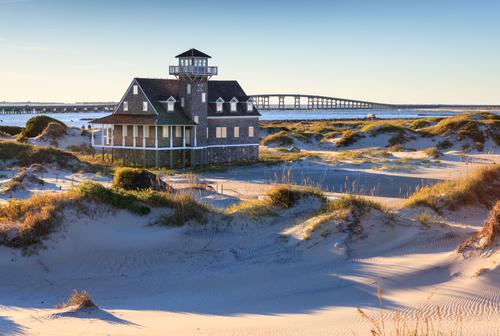When hurricanes like Florence make landfall, the first things they hit often are barrier islands—thin ribbons of sand that line the U.S. Atlantic and Gulf coasts. It’s hard to imagine how these narrow strips can withstand such forces, but in fact, many of them have buffered our shores for centuries.
Barrier islands protect about 10 percent of coastlines worldwide. When hurricanes and storms make landfall, these strands absorb much of their force, reducing wave energy, and protecting inland areas.
They also provide a sheltered environment that enables estuaries and marshes to form behind them. These zones serve many valuable ecological functions, such as reducing coastal erosion, purifying water, and providing habitat for fish and birds.
Many barrier islands have been developed into popular tourist destinations, including North Carolina’s Outer Banks and South Carolina’s Hilton Head and Kiawah. Islands that have been preserved in their natural state can move with storms, shifting their shapes over time. But many human activities interfere with these natural movements, making the islands more vulnerable.
Islands on the Move
Barrier islands are made of sandy, erodible soil and subject to high-energy wave action. They are dynamic systems that constantly form and reform. But this doesn’t necessarily mean the islands are disappearing. Rather, they migrate naturally, building up sand in some areas and eroding in other areas.
New islands can form out in the ocean, either because local sea level drops or tectonics or sediment deposition raises the ocean floor. Or they may shift laterally along the shore as currents carry sediments from one end of the island toward the other. On the East Coast, barrier islands usually move from north to south because longshore currents transport sand in the same direction.
And over time many barrier islands move landward, toward the shore. This typically happens because local sea levels rise, so waves wash over the islands during storms, moving sand from the ocean side to the inland side.






